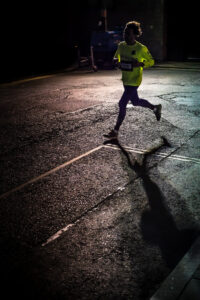Trail running at night offers a unique and exhilarating experience, but it comes with its own set of challenges, primarily centered around visibility. Having the right amount of light is crucial for safety and performance. In this guide, we will delve into the important considerations when it comes to how many lumens for trail running, exploring various lighting options, battery life, and other key features to help you make an informed decision.
How Many Lumens for Trail Running: Choosing the Right Light for Your Nighttime Adventures
I. Understanding Lumens and Their Significance
Lumens are a measure of the visible light emitted by a light source. When it comes to trail running at night, having the appropriate lumen output is essential for providing enough light to navigate the terrain effectively. More lumens translate to brighter light, which is particularly crucial for technical trails with uneven surfaces and potential obstacles.

II. Choosing the Right Light Source
The type of light source in your head torch can greatly impact your night trail running experience. LED lights are a popular choice for their energy efficiency, providing a bright and steady beam without draining the battery excessively. Consider a headlamp with multiple lighting modes, including a maximum brightness option for when you need that extra boost of light.
III. Evaluating Battery Life for Night Trail Running
Battery life is a key feature to consider, as it directly impacts how long you can sustain your night run. Opt for rechargeable batteries or a headlamp with a battery pack that offers great battery life. This will ensure that you have enough power to illuminate your path throughout the duration of your run.
IV. Spotlight vs. Flood Beam: Which is Better?
Spot beams offer a concentrated, narrow beam of light that throws further, providing depth perception for seeing objects at a distance. Flood beams, on the other hand, emit a wider, softer light that illuminates a larger area at a shorter distance. For trail running, a combination of both may be ideal, allowing you to adapt to different terrains and conditions.
V. Red Lights for Preserving Night Vision
Red lights are an invaluable feature for night runners, as they help preserve your night vision while still providing enough illumination to navigate the trail. Many headlamps come equipped with red light settings, allowing you to switch between white and red lights as needed.

VI. Considering Weight and Bounce
Trail runners, especially ultra runners, are particularly sensitive to the extra weight on their heads. Look for headlamps with a head strap that minimizes bounce, ensuring a secure and comfortable fit throughout your run. Additionally, lightweight options with efficient battery packs can help reduce the overall weight.
VII. Battery Weight and Efficiency
For longer night runs, every gram counts. Consider the weight of the battery pack or batteries, and opt for energy-efficient options that provide great battery life without adding unnecessary bulk.
VIII. Adaptability to Ambient Light
Lighting options that offer adaptive lighting, allowing you to adjust brightness based on ambient light conditions, can be a game-changer. This feature ensures that you have just the right amount of light, whether you’re running under a full moon or in near-complete darkness.
Final Thoughts
Choosing the right headlamp for night trail running is a crucial decision that can significantly impact your safety and performance. By considering factors such as lumen output, battery life, beam types, and adaptability to ambient light, you can find the perfect headlamp to illuminate your path and make your nighttime runs a thrilling and safe experience. Remember, the key is to strike a balance between having enough light and minimizing any extra weight or discomfort. With the right headlamp, you’ll be able to conquer even the darkest trails with confidence.
